If you are curious to know how does sun’s energy drives the convection within the atmosphere and ocean producing winds and ocean currents, then you have come to the right place. In this article, we will uncover the mysteries behind high-speed winds, storms, Cyclones, Earthquakes, etc. Here we will learn the concepts of physics which cause these activities in the earth’s atmosphere and ocean. And in the end, you will know the most popular FAQ’s on convection currents.
Introduction:
We all witness a variety of natural phenomena happening within the earth’s atmosphere such as high-speed winds, storms, tornadoes, hurricanes, and, cyclones. The first thing that comes to our mind when we witness these activities is why it happens. People usually tend to attribute these phenomena to supernatural forces or most of them believe it to be an act of God. Well, the fact is these activities within the atmosphere or in the ocean occur so as to redistribute energy away from hotter areas to cooler areas to cooler areas of the earth. Which is essential to avoid sharp temperature differences in the atmosphere.
Definition of Convection:
Convection can be defined as the movement within a liquid or gas caused by differences in temperature.
Working of Convection:
We can try to try to express convection currents in simple terms like below,
Temperature, density, and pressure = Convection Current.
When fluids like air and water are heated, molecules start to move further apart and the fluid expands, becoming less dense. And it is observed that dense fluids sink and less dense fluids rise up, for example, hot air rises up. Pressure is the force of something weighing down on you. If you have ever dived to the bottom of a swimming pool, you can feel the weight of the water pressing down on you. It makes your ears pop making you very uncomfortable, that’s pressure. The more matter there is weighing down on top of you the higher the pressure you feel. Rising fluids create areas of low pressure and sinking fluids create areas of high pressure. If the temperature of the fluid increases, it decreases the density and creates an area of low pressure. And if the temperature of fluid decreases, it increases the density and creates an area of high pressure. These changes cause the fluid to circulate in the circular convection current. Distributing the heat throughout the entire fluid.
Convection within the atmosphere of Earth:
Because the earth is a sphere, it isn’t heated by the sun’s radiation evenly. The equator receives more radiation than the poles as shown in figure.1. Therefore, the equator is much warmer than the poles. And this uneven heating of the earth’s surface causes convection currents in the atmosphere and oceans. And this is the reason why we see high-speed winds and storms. Because air starts to move from hotter areas to cooler areas which form the winds which are illustrated in fig.2.
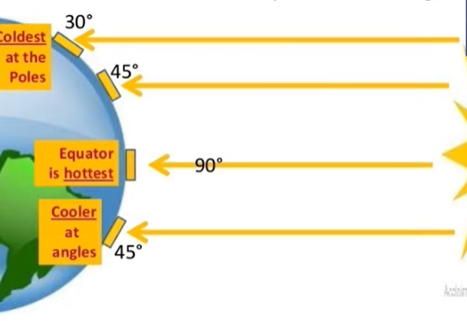
Fig.1. Sun’s radiations strike the earth at different angles.
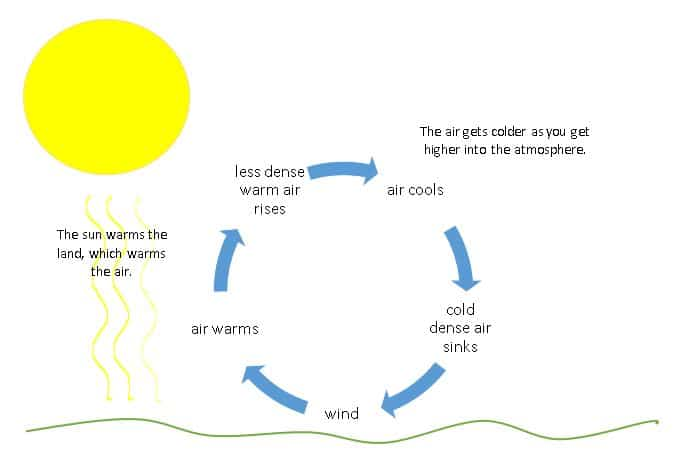
Fig.2. Convection in the atmosphere.
Atmospheric Convection Cell:
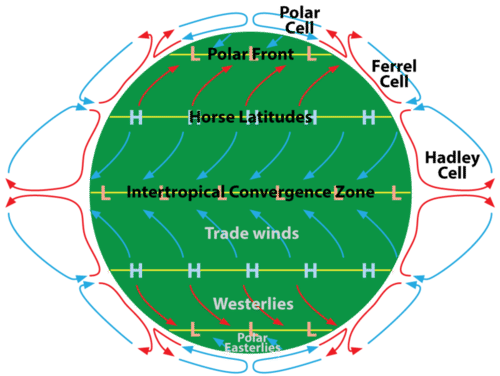
Fig.3. Atmospheric Convection cells.
Now you might think that there is just one large convection cell in each hemisphere going from the equator to the poles, but there are three actually. Air from the equator cools and falls to the earth long before it reaches the poles. And the polar air gets warm enough to rise long before it makes it to the equator. Because of this, the Northern and Southern hemispheres consist of three convection cells. The Headly cell is closest to the equator, the Ferrel cell is in the middle, and the polar cell is farthest from the equator. These convection cells determine things such as climates at certain latitudes. Atmospheric convection cells occur locally because land masses heat up more quickly than bodies of water.
Convection current in Ocean:
There are two types of ocean currents.
Surface currents are caused by the force of global wind patterns.
Deep ocean currents are caused by the uneven heating of ocean and salinity ocean water.
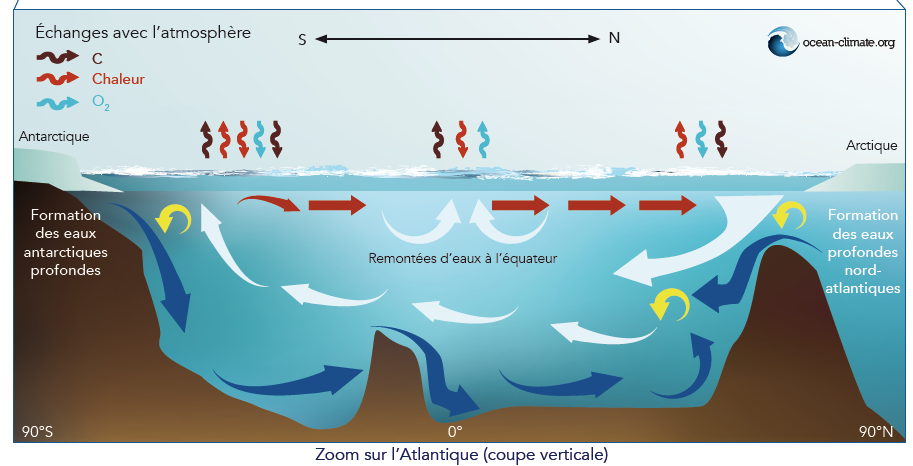
Fig.2. Convection in the ocean
Convection Current in Earth’s mantle:
Below the surface of the earth there is a large layer of the mantle of a few thousand kilometers. It consists of magma. The magma near the outer core is hotter and the farther the magma is from the outer core, the colder it is. The hotter magma goes up towards the lithosphere and once its temperature is decreased it goes down near the outer core and eventually gets heated. Once the temperature is increased it will go up again. This cycle goes on and on creating what we call the convection current in the mantle. This is the reason why tectonic plates move. The plates are like egg shells on top of butter which is the asthenosphere or the upper part of a mantle. Once this mantle starts to move the egg shells will also move. Here you will see various directions of convection current in the mantle. Some follow the clockwise direction and others follow the counterclockwise direction. These directions of flow of convection currents lead to different types of plate boundaries.
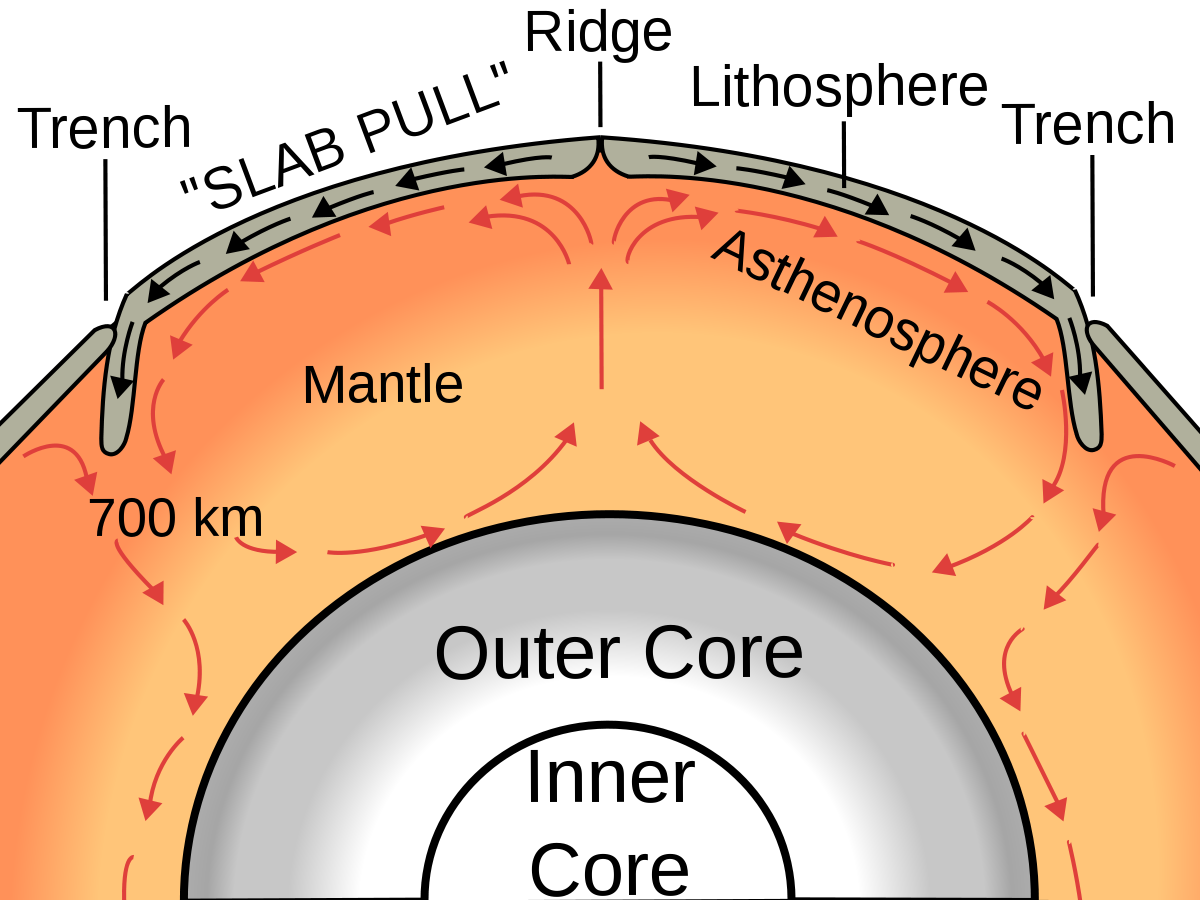
Fig.3. Convection in the planetary mantle.
Convergent type of Plate boundary:
This type of plate boundary forms when the convection cell on the left side moves in a clockwise direction while the convection cell on the right side follows an anticlockwise direction. Apparently, Because of this opposite movement of the convection cells, the plates above them move toward each other. This is illustrated below in fig.4. This type of boundary results in a trench and the creation of volcanos.

Fig.4. Convergent type of plate boundary.
Divergent type plate boundary:
The divergent type of plate boundary forms when the convection cell on the left side follows a counterclockwise direction while the convection cell on the right side follows a clockwise direction allowing the plates above them to move away from each other. This is illustrated below in fig.5. This type of movement results in a mid-oceanic ridge.

Fig.5. Divergent type of plates.
Recommended Articles:
Constants in Physics: Fundamental, Electromagnetic, Quantum, And Cosmological
Read All About Constellations And Its Types
Charging by Induction: Introduction, Derivation, Examples, And Applications
Continuous Charge Distribution: Density, Type, Importance, And Comparison
Controlled Thermonuclear Fusion
Convection can be defined as the movement within a liquid or gas caused by differences in temperature. Convection occurs in a fluid when its temperature, density, and pressure of it Change. The movement of low-density fluid from hotter areas to colder areas and high-density fluid from colder areas to hotter areas constitutes the circulation of the fluid in a circular path. This is called a convection current. The convection cycle is the path of circulation of fluid from hotter areas to colder and from colder areas back to hotter areas. Convection Currents FAQs
What is Convection?
What Causes convection?
What is the convection current?
What is the convection cycle
